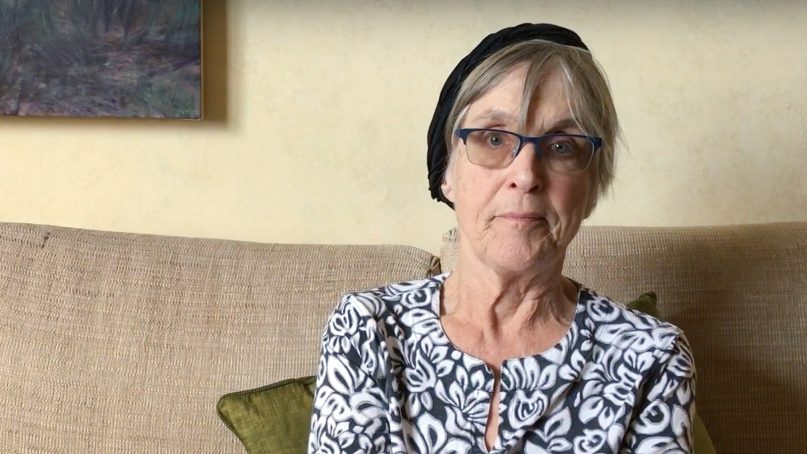(RNS) — We knew that this day was coming, and we dreaded it. Rabbi Rachel Cowan has died at the age of 77.
It would be hard to imagine a Jewish spiritual leader who had more of a pioneering spirit than Rachel: in new understandings of aging; in the Jewish healing movement; in Jewish spirituality.
But, there is more.
Rachel was married to Paul Cowan, of blessed memory, a journalist who wrote for the Village Voice — also, now, of blessed memory. (Rachel and the Voice died on the same day. How is that for irony?)
Paul was the product of an assimilated Jewish family. You can read his story in his memoir, “An Orphan In History: One Man’s Triumphant Search for His Jewish Roots.”
Rachel had roots that went all the way back to the Mayflower. Together, they explored Judaism. Paul reclaimed the faith of his ancestors. I invited them to speak to my congregation in Bucks County, Pennsylvania. They were wonderful and gracious.
Rachel adopted the faith and people of Paul’s ancestors. She converted to Judaism. She became a rabbi.
Paul fell ill to leukemia. His account of his struggle appeared in the Village Voice.
”I had assumed,” he wrote, ”that health and sickness were separate, distinct terrains. I’ve since learned that those boundaries don’t really exist. Instead, the world is composed of the sick and the not-yet-sick.”
Paul died at the age of 48 — far too young. I often think about what he could have done had he lived longer, how the Jewish world would have been so much richer for his gifts.
I will never forget his funeral, held during the intermediate days of Sukkot, in the autumn of 1988.
It was held at Ansche Chesed on the Upper West Side of Manhattan (as was Rachel’s). One of the speakers was the Orthodox rabbi who had helped bring Paul and Rachel back to Judaism.
As he got up to speak, this is what he said: “How much I would have wanted to say a eulogy for my friend Shaul (Paul’s Hebrew name). But, I cannot. It is forbidden to give eulogies during the festival of Sukkot, because it is a time of rejoicing.
“The halacha (Jewish law) has sealed my lips.”
I loved that image. It was as if he had no choice but to refrain from giving a eulogy.
“But,” he continued, “if I were permitted to give a eulogy, this is what I would say …” and then he proceeded to speak lovingly of his friend and student.
Paul’s funeral service ended with the assembled throngs walking the hearse onto the West Side Highway, as it made its journey up to Cape Cod, where Paul would be buried. We walked with the hearse until it got onto the parkway.
It was then that I discovered why the Hebrew word for funeral is levaya — the act of accompanying the dead.
As part of their journey towards Judaism, Paul and Rachel were among the first to open the subject of intermarriage to the general Jewish public. This was in the formative years of outreach, when such conversations were new and raw and emotional.
To this day, I draw upon their book, Mixed Blessings: Overcoming the Stumbling Blocks in an Interfaith Marriage, for its wisdom. And, for many years hence, I would consult with Rachel on issues of mixed marriage and how the Jewish community can simultaneously attract and inspire the intermarried. She was always thoughtful, insightful, and very funny.
I credit Rachel with one of the best one-line zingers in contemporary Jewish life.
As I said, Rachel was ethnically a New England WASP. She joined the Jewish people, and became a rabbi. Since that time, in the last almost 30 years, many Jews-by-choice have become rabbis. It is hardly unusual, and their presence is a rich and powerful blessing.
Not back in the late 1980s. The Jewish community still had “stuff” about converts (and still has the same stuff).
And then, someone fed Rachel that line that was old and tired even back then: “You don’t look Jewish.”
To which she responded, with barely a pause: “Funny how Jewish looks these days, isn’t it?”
With that one line, Rachel demolished — or began the process of demolishing — an entire wall that surrounded the Jewish people. She was like Joshua, blowing on the shofar, bringing down the walls of Jericho.
Rachel’s comment still resounds, because we are still fighting that battle — against the idea of “looking Jewish,” with all its ethnocentric and racist overtones.
So: Jews come in all colors, shapes, and sizes. On Rosh Hashanah, I will look out into my congregation, and I will see: Ashkenazic Jews. Sephardic Jews. Iraqi Jews. Black Jews. Hispanic Jews. Indian Jews. Chinese Jews. Japanese Jews. Vietnamese Jews. Thai Jews … not to mention Jews who are married to people of the above named origins.
And, yes — Jews whose ancestors came over on the Mayflower. Just like Rachel.
As we enter this new year, and as we remember and honor the memory of Rachel Cowan, let us resolve to create Jewish places for all Jews. No matter how they look. No matter where their ancestors were born.
Rabbi Rachel Cowan’s memory is a blessing. I miss her already.
But, next time someone opens their trap about “looking Jewish,” I will know how to respond.
Thanks, Rachel.






